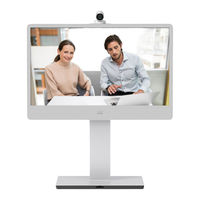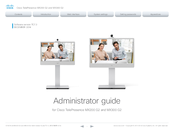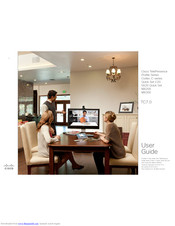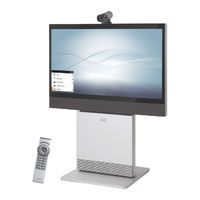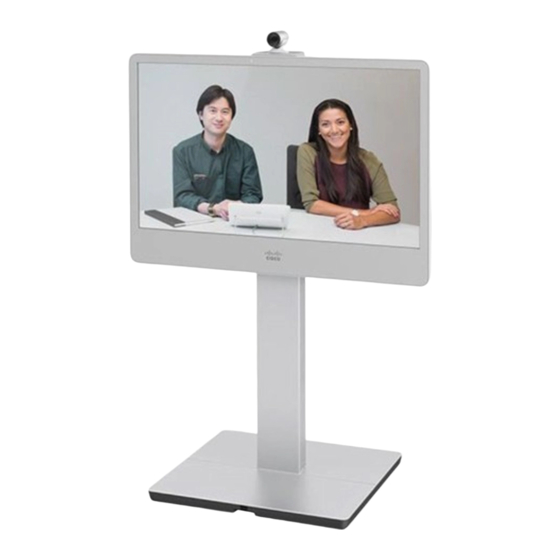
Cisco MX300 G2 Manuals
Manuals and User Guides for Cisco MX300 G2. We have 13 Cisco MX300 G2 manuals available for free PDF download: Administrator's Manual, User Manual, Getting Started Manual, Installing, Quick Reference Manual
Cisco MX300 G2 Administrator's Manual (141 pages)
Brand: Cisco
|
Category: Conference System
|
Size: 7.22 MB
Table of Contents
Advertisement
Cisco MX300 G2 Administrator's Manual (129 pages)
Software version TC7.3
Brand: Cisco
|
Category: Conference System
|
Size: 9.43 MB
Table of Contents
Cisco MX300 G2 User Manual (79 pages)
Brand: Cisco
|
Category: Conference System
|
Size: 6.02 MB
Table of Contents
Advertisement
Cisco MX300 G2 User Manual (75 pages)
Brand: Cisco
|
Category: Conference System
|
Size: 3.95 MB
Table of Contents
Cisco MX300 G2 User Manual (74 pages)
Brand: Cisco
|
Category: Conference System
|
Size: 4.62 MB
Table of Contents
Cisco MX300 G2 Getting Started Manual (46 pages)
Brand: Cisco
|
Category: Conference System
|
Size: 7.49 MB
Table of Contents
Cisco MX300 G2 Installing (7 pages)
Brand: Cisco
|
Category: Conference System
|
Size: 1.66 MB
Cisco MX300 G2 Installing (7 pages)
Brand: Cisco
|
Category: Conference System
|
Size: 2.62 MB
Cisco MX300 G2 Quick Reference Manual (2 pages)
Brand: Cisco
|
Category: Conference System
|
Size: 0.33 MB
Cisco MX300 G2 Quick Reference Manual (2 pages)
Brand: Cisco
|
Category: Touch Panel
|
Size: 0.37 MB
Cisco MX300 G2 Quick Reference Manual (2 pages)
Brand: Cisco
|
Category: Conference System
|
Size: 0.33 MB
Cisco MX300 G2 Quick Reference Manual (2 pages)
Brand: Cisco
|
Category: Projector Accessories
|
Size: 0.45 MB
Cisco MX300 G2 Quick Reference Manual (2 pages)
Brand: Cisco
|
Category: Conference System
|
Size: 0.41 MB
